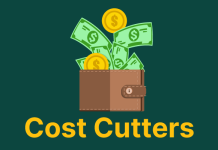In this episode of The Workplace podcast, CalChamber President and CEO Allan Zaremberg and Mark Vitner, managing director and senior economist at Wells Fargo Securities, LLC, discuss the variety of federal COVID-19 loan programs available for businesses of all sizes, and provide tips on how businesses can prepare for the new economic landscape that awaits.
Cushioning the Blow
It appears as though the country is seeing the peak in the growth rate of confirmed cases of COVID-19, and once the country is past the peak, the conversation will likely move from how to combat the virus to how we are going to go about reopening the economy, Vitner tells Zaremberg.
“It’s not too soon to start thinking about how you’re going to reopen your business,” Vitner says. A lot of things will have to take place, Vitner notes, including improved testing, the ability to test for antibodies, the adoption of social distancing guidelines. Those things will happen in the next few weeks, he comments.
Vitner says the economy reopening will be a gradual process, with the bulk of the contraction in economic activity having occurred from the middle of March to early May, with about 25 million jobs lost in the nation.
Although not all jobs will return, he says, a significant number of those lost jobs will return over the course of the year.
Helping speed the economic recovery is the variety of targeted business loan programs the federal government created to encourage businesses to rehire their workers by the end of June.
“I think we are going to see a nice bounceback. And the Payroll Protection Program (PPP) will be a key part of that,” Vitner says.
Vitner commends the variety of programs the federal government has created in such a short time. These programs address the many different sectors of the economy to help lessen the extent of the downturn and hopefully accelerate the economy, he explains.
For example, the expansion of unemployment insurance cushions the blow of unemployment, and aid to large businesses helps maintain essential equipment and supply chains, helping all businesses get back on their feet, he says.
Mainly, Vitner says, the programs are trying to contain the damage in the economy in such a way that it doesn’t fall onto the financial sector.
“If the financial sector is brought down…it makes recessions deeper and last for even longer,” he tells Zaremberg.
Reevaluate Your Business Model
Vitner advises business owners to be as patient as possible and “realize that these are unprecedented times.”
Now is the optimal time to think about how your business is going to change, Vitner adds. “Because your business is going to change.”
He points out that even in a normal recession, the economy that emerges is very different from the one that went into it.
“…Typically the way that it differs is that business models that were already on the decline see that decline accelerated…models drop by the wayside, while business models that were ascending…see more capital thrown at them and they ascend at a faster rate,” Vitner explains. “So think not just about your overall business model, but what within your business model was on its way out and think about what was doing better and try to reallocate your resources into the areas you think will do best in this new environment.”
“Science will help get us on the path” to recovery, Zaremberg summarizes, and the advice is to “get your business ready for the new normal.”
Vitner adds that a huge drop in the economy is expected to hit in the second quarter, but that there should be a “nice bounce” in the third quarter.


